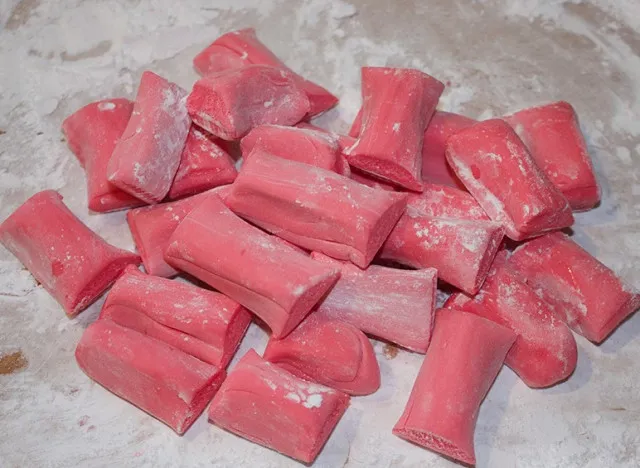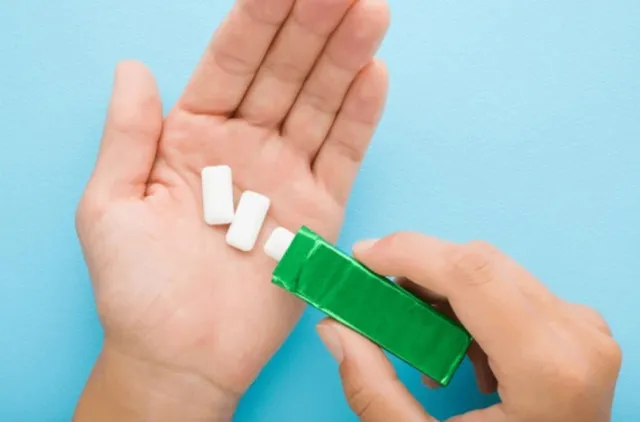Chewing gum has been a staple in people’s lives for generations. Whether you’re popping a piece in your mouth to freshen your breath or simply to occupy yourself, gum is a go-to for many. But have you ever stopped to wonder what exactly goes into this chewy treat? Recent revelations have left people astonished after discovering that modern chewing gum is made of ingredients that may surprise you.

Many people are unaware of the actual ingredients in chewing gum and other foods they consume. Image Credits: Getty
A Shocking Discovery on Social Media
Social media platforms are filled with discussions about the unexpected ingredients found in many of the foods we consume. Recently, a post on Reddit sent shockwaves across the internet when a user revealed that chewing gum is primarily made of rubber and plastic. Yes, you read that right—rubber and plastic! The post read: “TIL (Today I Learned) chewing gum is primarily made of rubber and plastic.”
The discussion quickly gained traction, and people were both shocked and amused by the discovery. One user humorously commented: “I thought Double Bubble was pure plastic with a little flavoring that lasted 5 seconds.” Another added: “Fresh Double Bubble is the greatest candy in the world.” The revelations sparked widespread curiosity, and many users expressed surprise at what they had unknowingly been chewing on all these years.
The Surprising Ingredients in Chewing Gum
It’s not uncommon for people to consume foods without fully understanding what’s in them. Just as some might cringe after learning what goes into certain processed foods, discovering the ingredients in gum can be equally surprising. Historically, gum was made from natural ingredients, most notably the sap of the Sapodilla tree, known as chicle. This natural latex served as the base for gum, providing its chewable texture.
However, over time, the ingredients used in gum have evolved. Today, most commercial gum products have shifted away from natural sources like chicle, opting instead for synthetic alternatives.
What Is Gum Really Made Of?
The Modern Gum Base
According to BBC Science Focus, the majority of gum manufacturers now use polyisobutylene as the primary gum base. Polyisobutylene is a synthetic substance commonly found in butyl rubber, which is also used to make inner tubes for tires. While this fact is enough to make anyone pause and rethink their chewing habits, it’s important to note that the polyisobutylene used in gum is mixed with food-grade plasticizers and other materials, making it safe for consumption.
The gum base is what gives chewing gum its distinctive chewable texture. This synthetic rubber is specifically designed to soften and become pliable when exposed to the warmth of the mouth, providing that satisfying, stretchy texture that makes gum so popular.

Historically, chewing gum was made from the sap of the Sapodilla tree, but now it’s different. Image Credits: Getty
The Science Behind Chewing Gum’s Texture
The success of both chicle and polyisobutylene in gum lies in their temperature sensitivity. These materials soften when exposed to the heat inside your mouth, allowing them to go from firm to flexible in a matter of seconds. This transformation is what allows gum to be chewed for long periods without breaking apart.
Despite the widespread use of polyisobutylene, some gum manufacturers still use chicle as a natural alternative, catering to those who prefer eco-friendly or organic products. In addition, researchers are exploring innovative alternatives, such as corn zein, to replicate the chewiness of gum without relying on synthetic materials.
Are There Safety Concerns About Chewing Gum?
Given the surprising revelation that gum contains rubber and plastic-like materials, many people might naturally wonder if chewing gum is safe. Fortunately, chewing gum is classified as safe for consumption. All the ingredients used in modern gum production must pass strict safety regulations before being sold to the public.

Most companies now use polyisobutylene, a key component of butyl rubber, in gum production. Image Credits: Getty Image Credits: Getty
One of the most common myths about chewing gum is the fear of swallowing it. Many have heard the old wives’ tale that swallowed gum stays in your stomach for seven years. However, this is nothing more than a myth. Swallowed gum passes through the digestive system just like any other food. While it doesn’t break down easily, it eventually exits the body without causing harm.
Environmental Impact of Chewing Gum
While chewing gum may be safe for your body, its impact on the environment is another matter. Because the synthetic gum base is made from materials like polyisobutylene, it is non-biodegradable. This means that discarded gum sticks around for a long time, contributing to litter in public spaces and creating challenges for cleanup.
In fact, many cities spend significant resources removing gum from sidewalks and streets, as it often adheres to surfaces and is difficult to remove. This environmental impact has led to calls for more sustainable gum alternatives that break down more easily. Brands using natural gum bases like chicle offer a more eco-friendly solution, reducing the long-lasting impact of synthetic gum.
Natural Alternatives to Synthetic Gum
If the idea of chewing on synthetic rubber doesn’t sit well with you, don’t worry—there are natural alternatives available. Some gum manufacturers have returned to using natural ingredients, such as chicle, offering consumers an environmentally conscious option that still delivers the same chewy texture.
Additionally, newer ingredients like corn zein are being researched as potential substitutes for synthetic materials. These biodegradable alternatives aim to create gum that provides the same satisfying experience while minimizing its environmental footprint.

Chewing gum may also be made from natural substances like chicle or corn zein for an organic option. Image Credits: Getty
Should You Think Twice About Your Chewing Habits?
The revelation that chewing gum contains synthetic rubber and plastic-like substances has left many people reevaluating their chewing habits. While these ingredients may seem unusual, they are deemed safe for consumption. However, for those who are concerned about the environmental and health impacts of chewing synthetic gum, there are natural alternatives available.
Choosing a gum made from natural materials not only aligns with more eco-friendly values but also ensures that the product you’re enjoying is closer to what was originally chewed hundreds of years ago.
Conclusion: The Shocking Truth About Chewing Gum
The next time you pop a piece of gum in your mouth, you might think twice about what it’s made of. While modern gum is made using synthetic materials like polyisobutylene, there’s no need to worry about its safety. The materials used are food-grade and approved for consumption. That said, the environmental impact of synthetic gum is something worth considering, and natural alternatives like chicle offer a more sustainable option.
As more people become aware of what they’re consuming, chewing gum is one of the many products that has sparked surprise and curiosity. Whether you stick with your favorite brand or seek out natural options, knowing what goes into your gum makes every chew a little more interesting.


